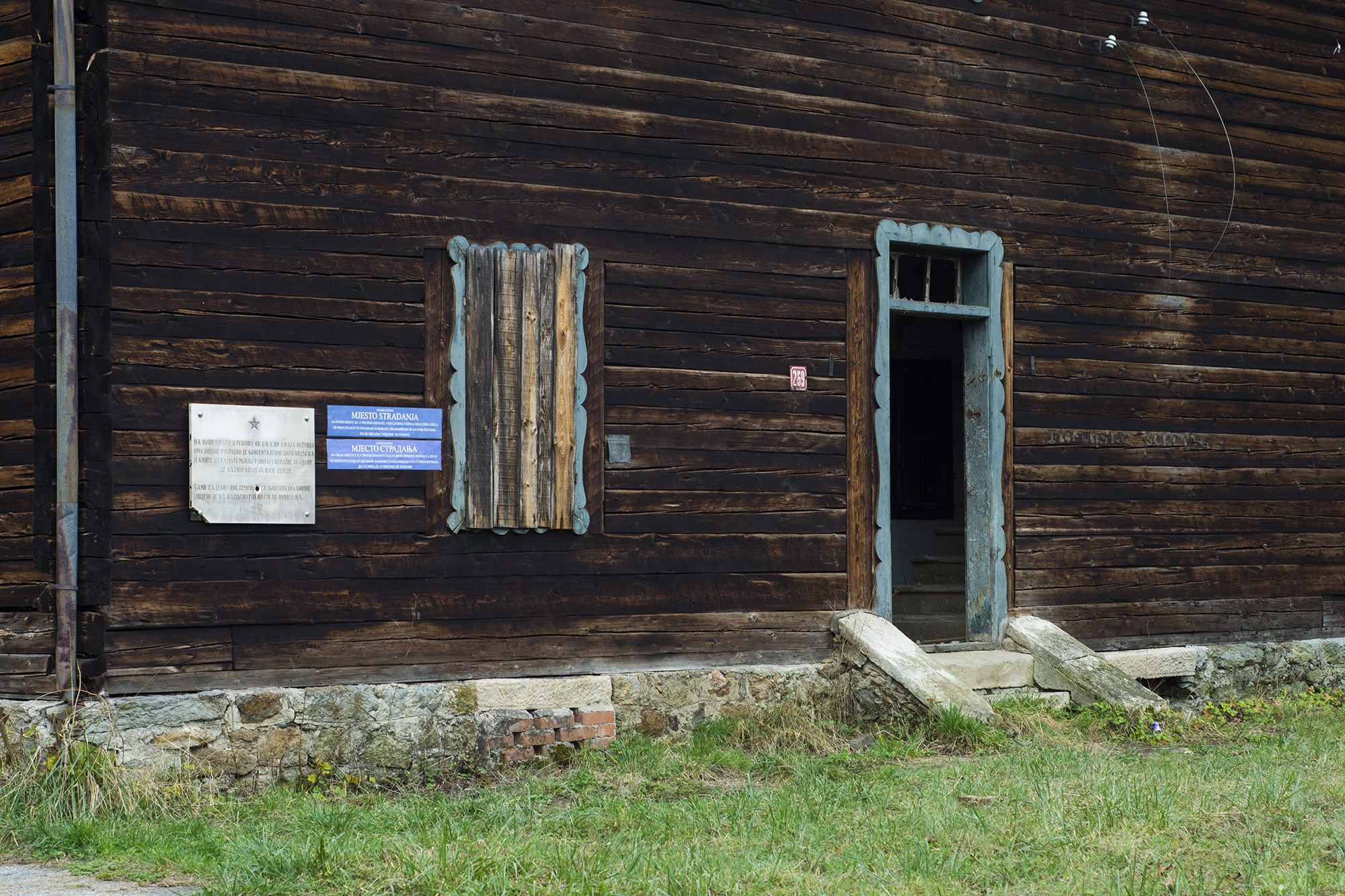In November 2018, the informal group of peace activities, in its 8th action of marking unmarked sites of atrocities, marked sites in Vitez, Bosanski Petrovac, Kotor Varoš and at Manjača.
It has been 25 years since the last war in Bosnia and Herzegovina, and almost every town still has many unmarked sites of atrocities (cultural centres, schools, farms and forest estates, police stations, hotels, etc.). Most of these buildings have been reconstructed since the war and returned to their original purpose, but they were never marked as sites of atrocities.

The Cultural Centre and “Black House” in Vitez
In this action, activists from different part of BiH marked the Cultural Centre in Vitez which was the HVO headquarters in April 1993 and served as a detention facility for 300 to 500 Bosniak civilians, men and women. That same year, the Dubravica Primary School was used as a detention facility for 360 Bosniak civilians and soldiers, and was marked in this action as an unmarked site of atrocity.
The so-called Black House was marked in the village of Kruščica near Vitez. It was a place of detention for Croat civilians and prisoners of war from May to November 1993, run by the ARBiH whose members physically and psychologically abused the prisoners.
In Počulica near Vitez, we marked the Community Centre which was run by ARBiH when it served as a detention facility for Croats in April 1993. On 24 April 1993, a member of ARBiH tried to force his way into the building, killing three and wounding nine people.
Some 20 kilometres from Drvar, we marked an unmarked site of atrocity, the Prekaja Primary School used in June 1992 by the VRS Second Krajina Corps as a place of detention and transit for Bosniaks. More than 80 prisoners passed through this detention facility in Prekaja.

Sites of atrocities in Bosanska Krajina
In Bosanski Petrovac, we marked a site near the Motel where, according to the indictment of the BiH Prosecutor’s Office, in September 1995, members of the ARBiH 5th Corps killed between 11 and 40 Serbs as part of the Sana 95 military operation. This case is currently on trial at the Court of BiH.
We also marked what was once the Kozila forest estate in the vicinity of Bosanski Petrovac. In early July 1992, it was under the control of JNA and VRS and served as a site of detention for 80 Bosniak civilians.
Continuing on through Bosanska Krajina, the peace activists marked another unmarked site of atrocity, the forcer detention facility at Manjača. Starting in mid-May 1992 and continuing through to December, the RS Army transported thousands of prisoners, mostly Bosniaks and Croats, from Banja Luka, Prijedor, Sanski Most, Ključ and other municipalities to the Manjača detention facility. According to unofficial figures, 5,434 prisoners were brought to the camp.

Negating and ignoring the suffering of “others”
We marked the Grabovica Primary School near Kotor Varoš as unmarked site of atrocity. It was used as a detention facility for 250 to 300 Bosniaks and Croats of all ages who had surrendered to the VRS as they fled from Večići. Classrooms were used as detention cells and prisoners were selected for liquidation. 161 prisoners were selected and executed on 3 and 4 November 1992.
“Still, when we talk about the suffering of others, it is seen as endangering our narrative and ‘our truth’, and is met by an automatically defensive attitude that ends up in the worst way possible, with negating and ignoring the suffering inflicted by those we see as ‘ours’. Better days will come only when we realise that dealing with the past is not a danger to our communities, but a way to change our attitude towards the past and teach both ourselves and future generations that the atrocities happened and that they must never happen again,” said the activists who have so far marked 67 sites of atrocities throughout BiH.
You can keep up with our activities of marking unmarked sites of atrocities on Facebook and Twitter.